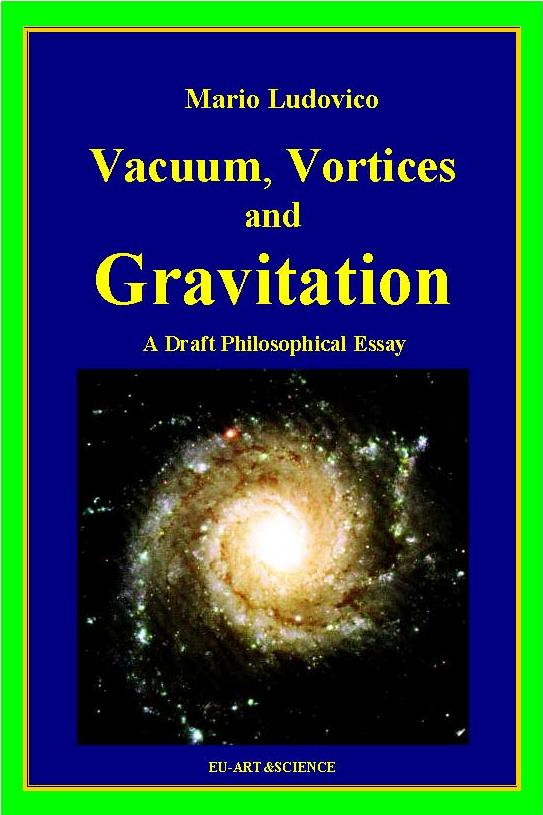The book presents an unusual approach to the analysis of cosmological issues. After reminding the reader of the dramatic change occurred even in Einstein\'s mind concerning the consistence of the Universe\'s physical space, the book\'s author invites the reader to reconsider the reasonable assumption that the \"vacuum\" is not void space, but, on the contrary, is the basic undetectable substance from which every physical phenomenon comes onto the perceivable reality. In his book, \"Mein Weltbuild\" (1934), after two decades of theoretical denial and uncertainty, Albert Einstein arrived at stating: \"According to the general theory of relativity, space without ether is unthinkable, for in such space not only would there be no propagation of light, but also no possibility of existence [...] of any space-time interval in the physical sense\".
Note that the start of Einstein\'s scientific career and success was based on the denials of any need to consider the existence of the \"ether\" or the like.
In 1991, in their book \"The Philosophy of Vacuum\", S. Saunders & H.R. Brown wrote: \"Today the vacuum is recognized as a rich physical medium [...] A general theory of the vacuum is thus a theory of everything, a universal theory. It would be appropriate to call the vacuum \"ether\" once again\".
Thus, the book restates the existence of such a cosmic basic substance, dubs it \"plenum\" in order to identify in its continuity its fundamental characteristic (i.e., the plenum does not consist of component particles), and hypothesizes the complementary presence of an infinite \"true and absolute void\", that surrounds the plenum and interferes with it. Inside such a void no physical phenomenon can either occur or propagate.
The plenum - in which the observable universe consists - is thought of as a finite incompressible \"fluid\" medium capable of any motion proper to very dense and homogeneous fluids, though neither mass nor energy should be attributed to the plenum in its rest state (if any).
On this basis, the outlined theory develops analytical definitions and implications; amongst which the possible formation of nuclei of true void inside the plenum, which - like because of \"lacerations\" - opens to the absolute void through torsion and/or rotation motions. The formation of masses, either permanent or ephemeral, depends on states of the plenum around nuclei (both infinitesimal and gigantic) of void.
Vortices are particular motions of the plenum.
Vortices do always form around linear \'cords\' of true vacuum that tend to close in \"rings\" or \"knots\" of fluid vortical \"ropes\": classic fluid-dynamics explains how and why.
Ring-vortices, in the author\'s opinion, are the simplest forms of \"gravitational fields\". The motion distribution of the fluid plenum within vortices determines - like in fluid dipoles - gradients of the fluid\'s speed in association with stationary kinematic fields of accelerations, which interact in various ways with any possible discontinuities (masses, or minor vortices for instance) appearing/forming in the fluid\'s flow continuity. Moreover, it is supposed that far from being the cause of gravitational attraction, ?masses? are emerging effects inherent in the formation and activity of gravitational vortices. In this connection, the book does also expound a re-interpretation of Newton?s gravitational law, which is got over by the new analysis of the issue in terms of fluid-dynamics.
The analysis leads to the formulation of equations, which may be considered as new schematic descriptions of gravitational fields and phenomena as well as of other dynamic effects.
Three appendices supplement the book\'s contents, in which explanations are also suggested for observed cosmic events that should not be expected in the light of the mainstream cosmological theories.
The outlined theory, however, is far from claiming it shows the final path to an explanation for everything, though the way of reasoning lies on the need for the formulation of a fundamental theory of the plenum or \"ether\" or whatever concept of the kind could profitably be proposed for better mastering matter and forces.
From his philosophical viewpoint, the author deems that the reality we perceive and observe remains always beyond the capability of human languages to represent it completely. The main purpose of the book does rather aim at suggesting experimental trials for practical achievements, such as instruments fit for controlling gravity effectively.



